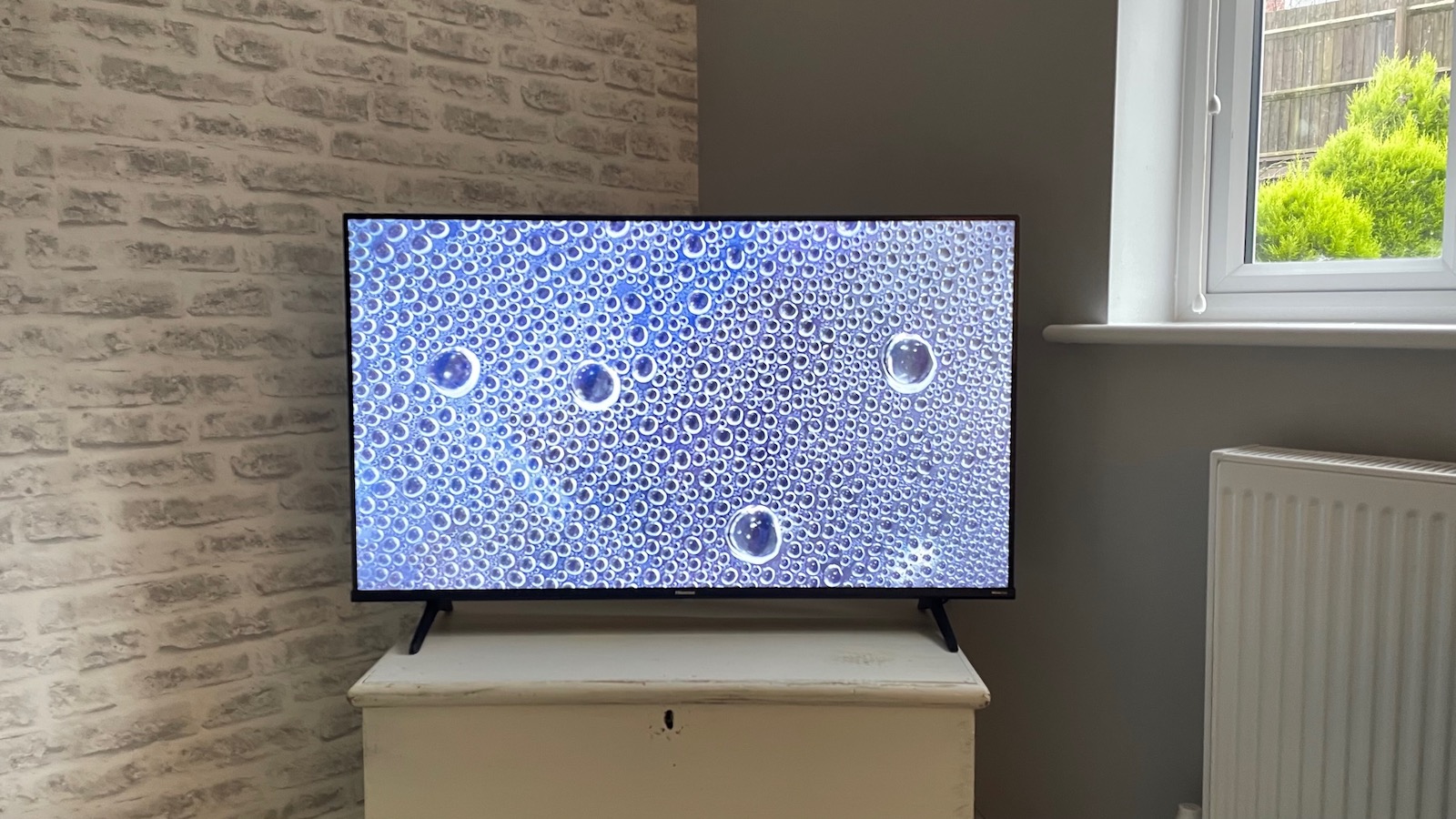What Hi-Fi? Verdict
Despite lacking sharpness and brightness, the 43A6KTUK still delivers a surprisingly balanced and consistent picture for such an affordable TV
Pros
- +
Incredibly cheap
- +
Decent black levels
- +
Well-balanced colours
Cons
- -
Soft-looking motion
- -
Limited viewing angles
- -
Limited brightness
Why you can trust What Hi-Fi?
There’s nothing deep about the 43A6KTUK’s star attraction; at just £229 for a 43-inch TV, it represents potentially ridiculously good value for money.
That's especially true when you consider that despite its low price it delivers a native 4K resolution, HDR support including Dolby Vision, AI-powered picture processing and Hisense’s increasingly handy VIDAA smart system. Let’s just hope it also has some decent performance chops to go with its on-paper charms.
Price
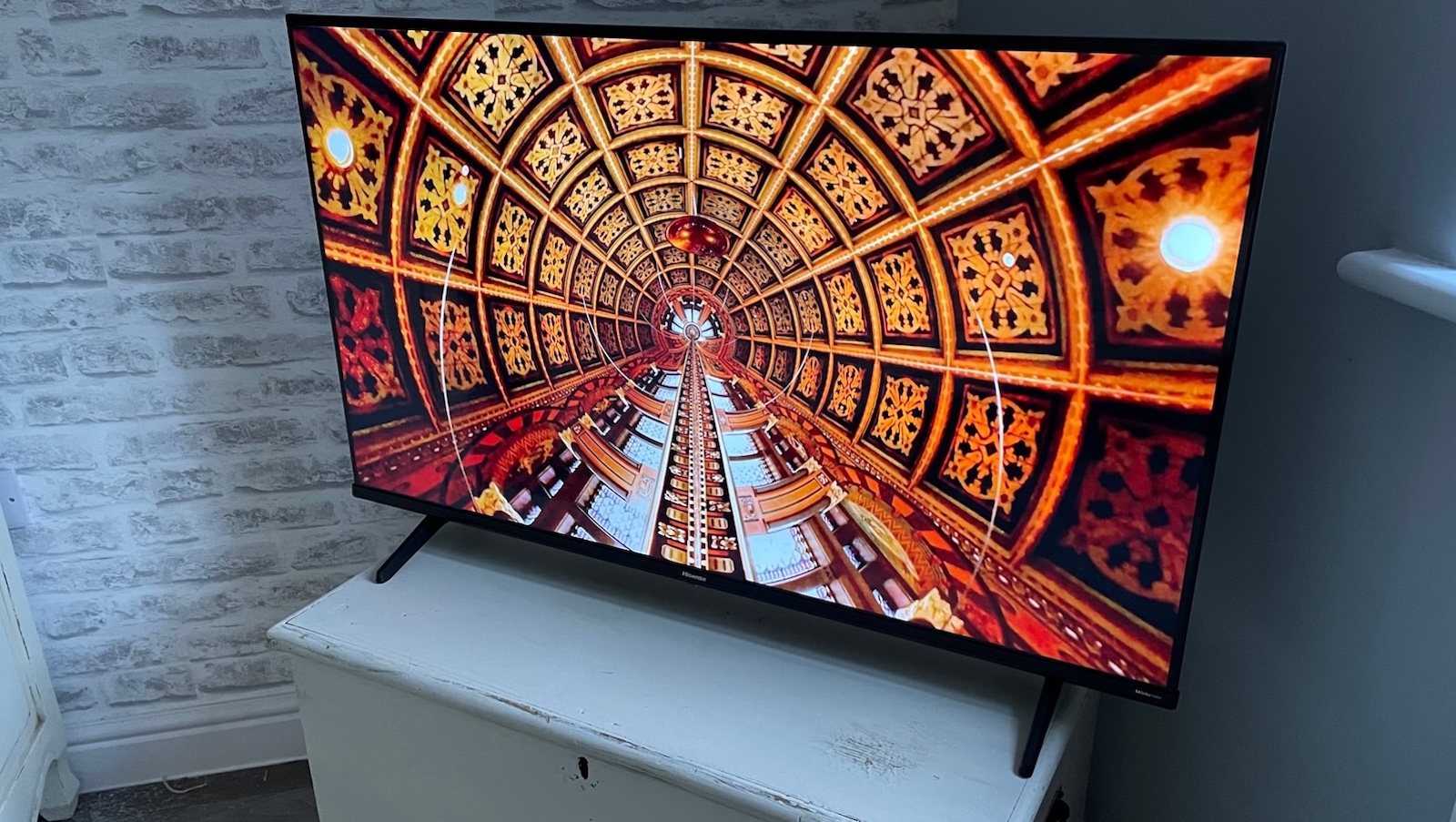
You don’t need us to tell you that £229 (around $290 / AU$440) is a puny sum to pay for a 43-inch 4K HDR TV. Even the recently reviewed Samsung UE43CU8000, a set we also thought was crazily cheap for what it offered, costs £150 more than the Hisense 43A6KTUK at the time of writing.
Hisense has more of a reputation for keeping prices ultra-low than Samsung, but as we’ll see, the Chinese brand doesn’t appear to have scrimped on the features – even features related to picture quality – anywhere near as much as we might have expected.
While a wide range of A6KTUK screen sizes is available in the UK, Hisense doesn’t currently sell any A6KTUK models in the US, and in Australia limits itself to only the 58- and 70-inch A6 models.
Design
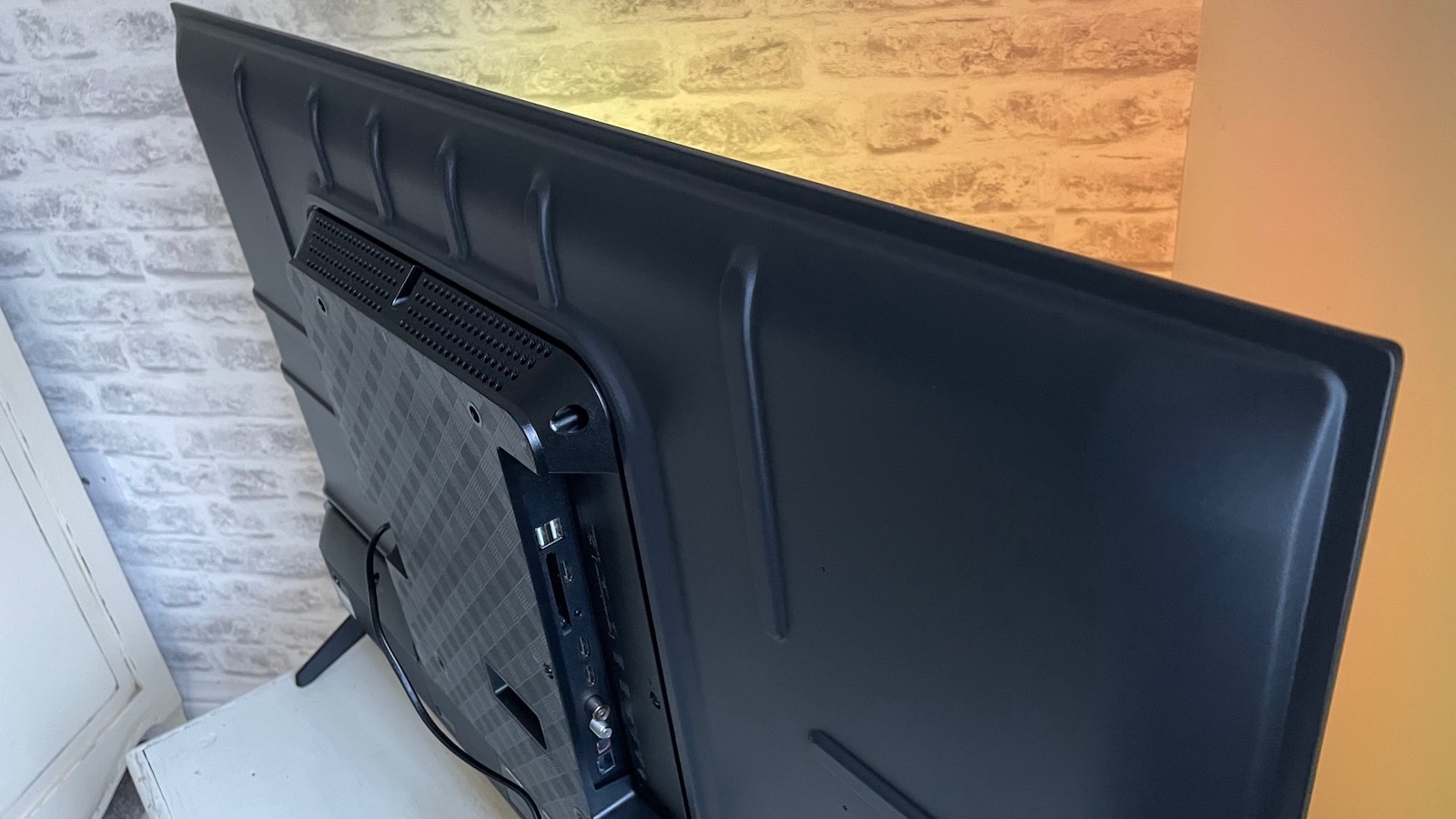
The 43A6KTUK looks perfectly respectable for such a cheap TV. Its frame is impressively thin around its side and top edges, and while its bottom edge is much wider, Hisense has successfully made a feature of this by also making the bottom edge stick out further forward and sideways than the rest of the frame. The way Hisense has rounded off the left and right top corners softens the TV’s impact, too.
Unlike the Samsung UE43CU8000, there’s nothing slim about the Hisense 43A6KTUK’s rear. On the contrary, it’s deeper than most TVs we see now at its chunkiest point, making it better suited to a corner of the room position than wall mounting. Some will also find the unusually extreme variations in depth across the 43A6KTUK’s rear to be clumsy or ugly, though we feel there is something appealingly industrial about it.
This debate is ultimately rendered moot, though, by the fact that the vast majority of homes won’t see the back of their TV once they’ve set it up.
Accompanying the 43A6KTUK is a large, elongated remote control that scores points over those of most budget rivals courtesy of a bank of 12 direct app access buttons at its top, including buttons for Apple TV+, Netflix, Freeview Play, Disney+, YouTube and Prime Video. Excellent.
The remote also sports a mic button to support the VIDAA smart system’s voice recognition capabilities, while its design is enlivened by an unexpected ‘dot matrix’ pattern etched into the top half of its rear edge.
Features
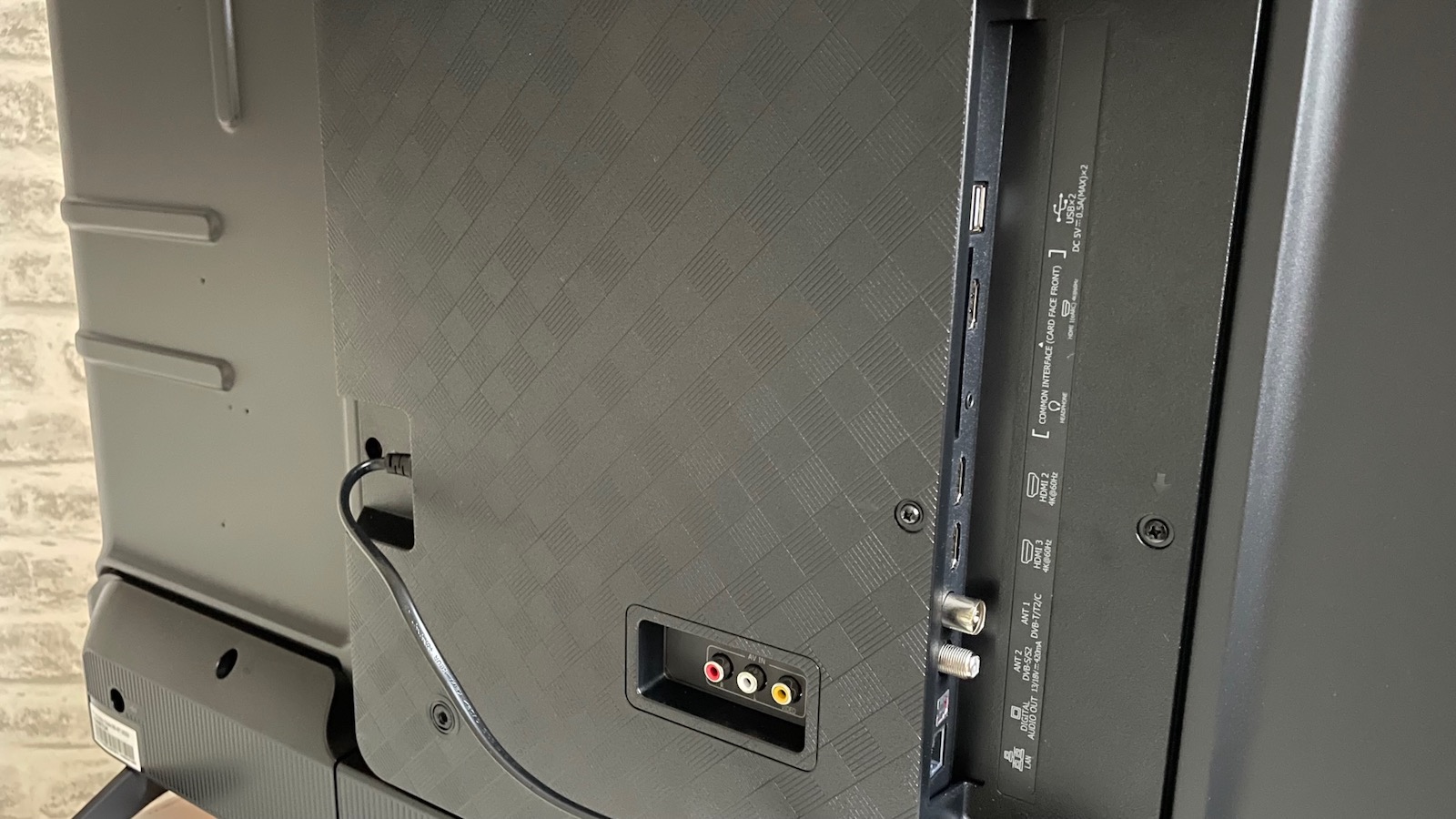
Inevitably a price this low comes with feature strings attached. So, for instance, there’s no Quantum Dot colour or local dimming in play on the Hisense 43A6KTUK. Nor is there any 4K/120Hz or VRR gaming support, for the simple reason Hisense’s super-cheap TV only uses a 60Hz panel, with HDMI ports that only have enough bandwidth to support the HDMI 2.1 format’s eARC and ALLM features.
Screen size 43 inches (also available in 50, 55, 58, 65, 70, 75 and 85 inches)
Type LCD
Backlight Direct LED
Resolution 4K
HDR formats HLG, HDR10, Dolby Vision
Operating system VIDAA
HDMI inputs x 3
Gaming features ALLM
ARC/eARC eARC
Optical output? Yes
Dimensions 56 x 96 x 7.4cm
If you’re not familiar with those two acronyms, the first means that the TV can be used to pass sound out over one of its HDMIs to a soundbar or AV receiver, while the second indicates that Hisense’s TV can automatically switch into its fastest response Game mode when a connected console is running a game rather than a video source.
Happily, the 43A6KTUK uses a VA LCD panel lit by LEDs placed directly behind the screen rather than around its edges. VA panels tend to have more limited viewing angles than the rival IPS types of LCD TV, but can control the light they let through better to achieve a (usually) better contrast performance. Similarly, experience suggests that placing LEDs behind a screen rather than around its edges again provides superior light control (with less chance of local light ‘clouding’) – even without any local dimming to help out.
Even more surprisingly for such a cheap TV, the 43A6KTUK carries a couple of bits of picture processing: motion compensation (though, oddly, this is greyed out with 24p sources) and Hisense’s AI Picture Optimization technology, which attempts to get the best look for each image frame the TV receives – especially when it comes to the tricky business of upscaling HD content to the TV’s native 4K resolution.
There’s even a slightly peculiar Enhanced ACR mode in the TV’s picture presets that allegedly uses your viewing data to automatically enhance both the image and sound quality for any source you’re watching. This seemed to make precious little visible difference to the picture during the time we spent with the TV, though.
Hisense also points to the 43A6KTUK’s quad-core processing engine being able to deliver more accurate colours but doesn’t provide much detail about exactly how this is achieved.
The 43A6KTUK impressively supports three of the four main HDR formats: HDR10, HLG and Dolby Vision, the last of which carries extra scene-by-scene picture data to help compatible displays deliver more dynamic and well-balanced results. We’ve seen it suggested on some websites that the 43A6KTUK supports the HDR10+ format, but our own tests show that this is not the case.
Note that the Dolby Vision support doesn’t extend to gaming; strangely, our Xbox Series X detected the TV as being capable of Dolby Vision, even suggesting in its initial assessment of the TV’s capabilities that we turn Dolby Vision Gaming on in the Xbox’s settings. But as soon as we did that the Xbox 'TV Details' screen changed to saying Dolby Vision for Gaming was not supported.
Rounding out a surprisingly promising features roster is Hisense’s VIDAA smart TV system. This isn’t the most glamorous-looking smart interface in TV land, but it has now improved to a point where it’s actually both efficient to use and able to deliver the vast majority of the streaming services most people like, including the catch-up services for all the main UK terrestrial broadcasters, delivered within the helpful Freeview Play umbrella app. There’s support for Apple Airplay and Google Home devices, too.
Picture

First impressions of the 43A6KTUK’s pictures are better than expected for such a cheap set, for two main reasons. First, the backlighting system is surprisingly assured. It’s capable of delivering some very respectable black tones by budget TV standards, with impressively little low-contrast greyness hanging over them. Especially if you stick with the Dolby Vision Dark setting with HDR sources, or the Standard or Night settings with non Dolby Vision HDR sources.
It also delivers dark scenes without any of the distracting ‘floating black levels’ that some more sophisticated TVs suffer with, provided you don’t set the Adaptive Contrast feature to its High level. And aside from a very faint (to the point where you typically won’t notice it unless you specifically look for it) ‘inner frame’ of extra light that runs around the edges of dark scenes, there’s hardly any evidence of pools of backlight clouding splotched across dark images of the sort seen so distractingly on the (edge-lit) Samsung UE43CU8000. This makes it much easier to remain immersed in dark scenes – especially since the TV also manages to portray pretty effective amounts of shadow detail in even the very blackest image areas.
The 43A6KTUK handles colour more effectively than we would have expected for such a cheap TV. The screen can’t get bright enough to deliver much colour volume, but within that limitation, tones look surprisingly realistic. There’s no compression or ‘clumping’ of colour tones even during dark shots, so leafy trees, grassy meadows and so on all look realistic and detailed. Even skin tones contain enough nuance and refinement to leave people looking like living, breathing humans rather than plasticky mannequins.
Tones across the board all feel in balance, too, with no stark reds, yellows, greens or blues becoming overly dominant. Best of all, the overall tone – especially though not exclusively with Dolby Vision content – looks like it’s been really nicely tuned for video content, even if saturations aren’t especially vivid.
The nuanced colours, decent contrast and an excellent input lag of just 10ms with the TV running in its Game mode make it a surprisingly decent gaming display too. Having said that, games – especially 30fps titles – can join 24 frames a second films in highlighting the TV’s main picture weakness: motion blur.
This is noticeable enough with really any content, even 60Hz games and broadcasts, to leave even good quality 4K source images looking a little soft. Even slightly unfocused in areas of particularly rapid movement or during some camera pans.
To be clear, you do feel with relatively static images as if you’re watching a 4K image, despite the relatively small dimensions of the 43A6KTUK’s 43-inch screen. The TV also upscales HD sources pretty well for such an affordable set, too, in terms of making the images look more detailed and textured. But both native 4K and upscaled images are routinely undermined by the TV’s motion blur issues, making the sense of the TV’s resolution feel inconsistent.
The other main issue with the 43A6KTUK’s pictures is something we alluded to in passing earlier: a lack of brightness. This is particularly evident in the way there isn’t much more brightness available – maybe a few nits here and there, but nothing really significant – to the screen for HDR than there is for SDR. So you certainly shouldn’t expect HDR to pop off the 43A6KTUK’s screen, or even to see all that much of a brightness or dynamic range leap as you switch between SDR and HDR sources.
The screen’s lack of native brightness can lead to some significant clipping of subtle detailing and shading out of the brightest parts of HDR images unless you opt for a relatively dark-looking overall picture setting such as Dolby Vision Dark or HDR Night.
The best that can be said about HDR is that Dolby Vision helps the TV deliver a more precise, natural and three-dimensional looking picture,
One final negative point is that while black levels and backlight consistency are good when viewing the 43A6KTUK pretty much straight on, patches of very noticeable greyness start to appear if you have to watch the TV from any angle beyond 20 degrees or so off-axis.
Sound
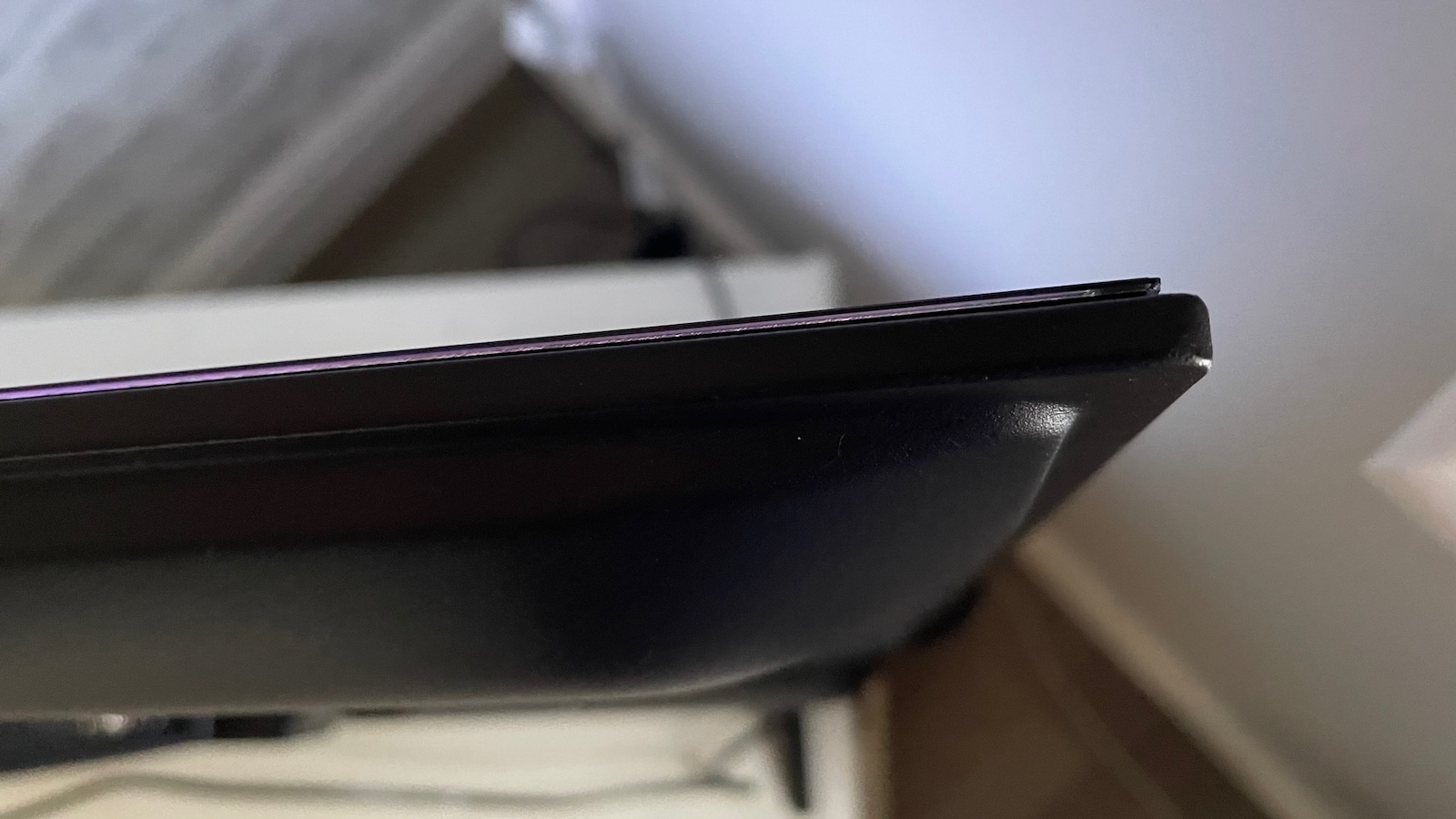
The 43A6KTUK’s sound is pretty good for such a cheap TV. Particularly unexpected is the scale of the soundstage it can project with surround sound film soundtracks if you select its Theater sound mode. Aided and abetted by DTS:Virtual X technology, this casts sound and, especially, ambient and score effects far to the screen’s left and right sides, and even tries to wrap them slightly forward at their edges to make you feel as if you’re hearing sounds coming from down the side of you.
It does this while also leaving vocals and key in-image placement effects locked to the screen where they should be. And when we say locked to the screen, we mean exactly that, with the processing also managing to add a touch of vertical elevation to the TV’s sound so that voices seem to be coming from the image rather than from somewhere below the screen.
You can detect gaps in the sound splay between the screen and its extremes, and there isn’t much forward projection from the central part of the mix to go with the slight curling forward effect of the sound stage’s left and right edges. Overall, though, the Theater mode is good enough to embarrass similar settings on some much more expensive TVs.
The 43A6KTUK can hit reasonably satisfying volume levels, too, without the speakers starting to distort or the cabinet starting to rattle.
There isn’t much bass to add meat to a good action sequence, though, which can leave such scenes sounding a bit thin and brittle. Nor is there sufficient volume headroom to allow escalating scenes to shift through many (or even any, really) gears; everything carries on at more or less the same level. Though at least they don’t actually collapse in on themselves as they can with some rival TVs.
Verdict
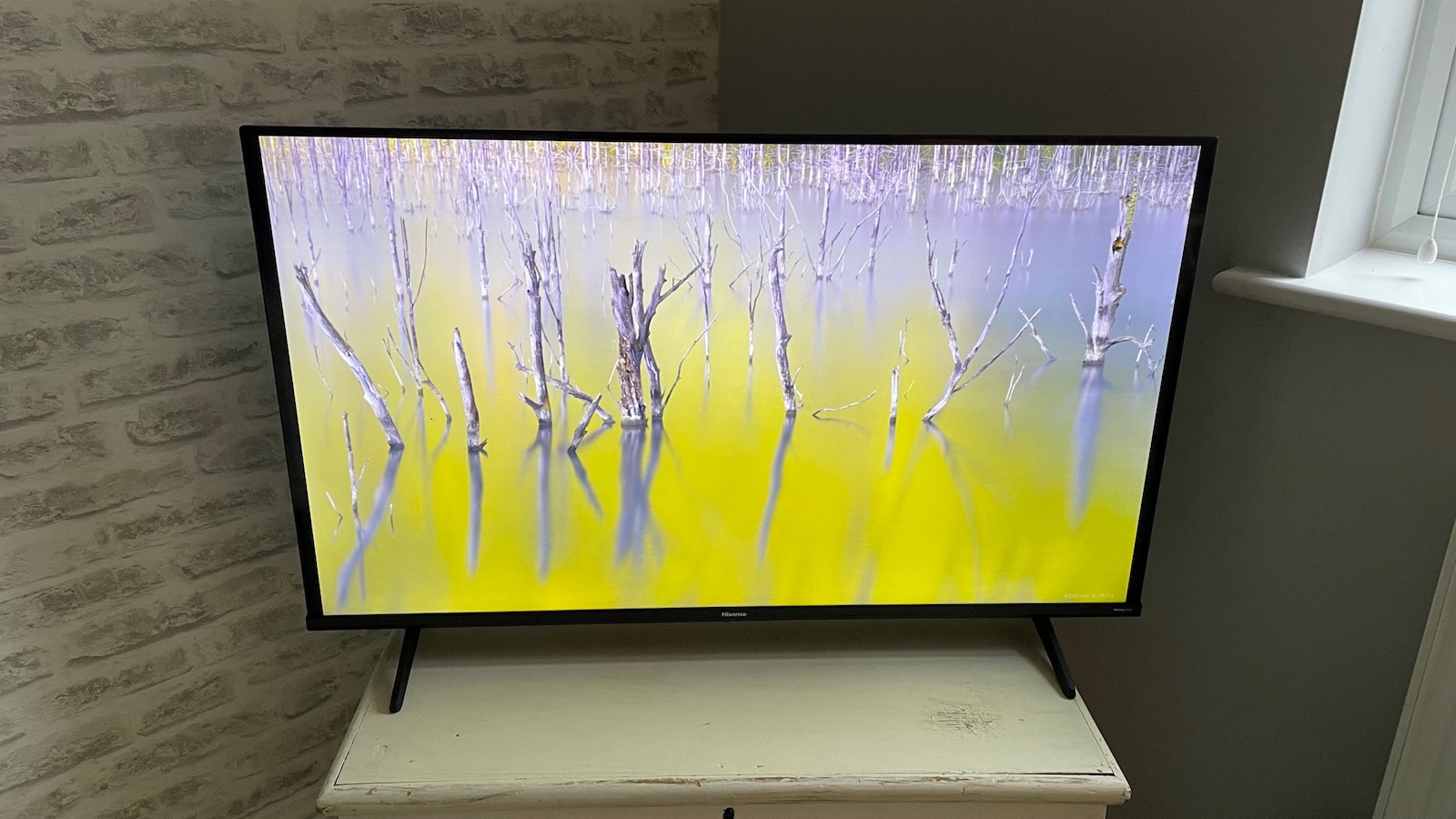
While the Hisense 43A6KTUK is inevitably (given how cheap it is) far from perfect, even with its soft-looking motion and limited brightness it’s a much more engaging all-rounder than you’ve any right to expect for so little money.
SCORES
- Picture 4
- Sound 3
- Features 4
MORE:
Got a bigger budget? Here are the best TVs you can buy
And here are the best TV deals available right now
John Archer has written about TVs, projectors and other AV gear for, terrifyingly, nearly 30 years. Having started out with a brief but fun stint at Amiga Action magazine and then another brief, rather less fun stint working for Hansard in the Houses Of Parliament, he finally got into writing about AV kit properly at What Video and Home Cinema Choice magazines, eventually becoming Deputy Editor at the latter, before going freelance. As a freelancer John has covered AV technology for just about every tech magazine and website going, including Forbes, T3, TechRadar and Trusted Reviews. When not testing AV gear, John can usually be found gaming far more than is healthy for a middle-aged man, or at the gym trying and failing to make up for the amount of time he spends staring at screens.
